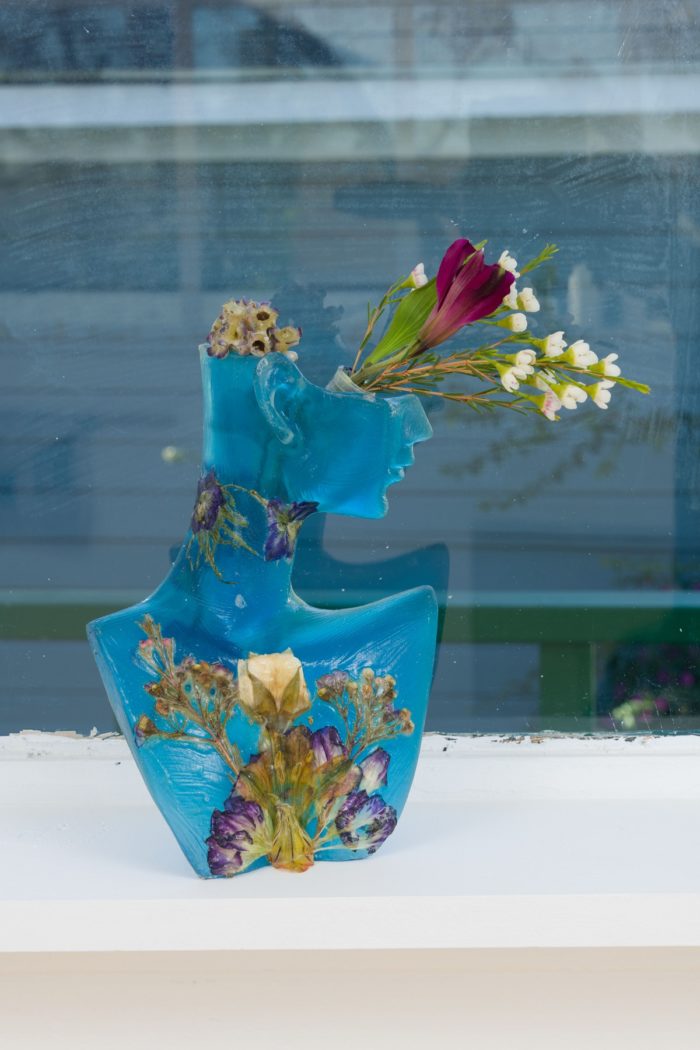Tiempo de lectura: 3 minutos

11.02.2018
Garden, Los Angeles, California, USA
19 de enero de 2018 – 3 de marzo de 2018



Artists: Genevieve Belleveau, Brian Khek, Dwyer Kilcollin, Arden Surdam, Naoki Sutter-Shudo, Alice Wang
Garden returns with A Curious Herbal, a group exhibition that investigates varying approaches to botanical representation. Utilizing imagery of flowers, fauna, fruits, and plants, the works included invoke themes of utility and ornament, preservation and mortality, collection and the Archive, arrangement and display. A Curious Herbal features work by Genevieve Belleveau, Brian Khek, Dwyer Kilcollin, Arden Surdam, Naoki Sutter-Shudo, and Alice Wang.
A Curious Herbal draws its name from the eponymous 1737 book of medicinal plant illustrations by Elizabeth Blackwell. Blackwell began the project as a means to free her husband from debtor’s prison. Over a period of two years Blackwell meticulously drew each plant in the Chelsea Physick Garden from life, producing over four plates per week. The resultant 500 prints with accompanying descriptive texts were adopted as the new primary reference for apothecaries in the 18th century.
An herbal is a book that contains illustrations, names, and descriptions of plants, accompanied by their medicinal, tonic, culinary, toxic, hallucinatory, aromatic, or magical properties. Herbals have been employed by a variety of cultures since antiquity to classify and describe plants, most famously with the 1st century Greek herbal De Materia Medica by Pedanius Dioscorides, which was still heavily copied and referenced in Europe until the 16th century. Botanical drawing later flourished during the Scientific Revolution with a proliferation of new herbal publications due to interest in plants from colonized territories. In the same moment, still life arose as a distinct genre in painting. Painted in sumptuous oils, still-life paintings depicted flowers, fruits, and decorative objects with detailed realism and iconic and allegorical symbolism. Wildly popular, still life paradoxically indulged in the aesthetic and sensual while delivering moralizing and religious messages including the inevitability of death and the ephemerality of worldly pleasures.
A Curious Herbal collects a variety of contemporary works that evolve from these practices. Inspired by the Dutch Tulipomania myth, Genevieve Belleveau creates a human floral bouquet in a performance with Themba Alleyne and live tulips. Inside the exhibition, her three translucent busts display flowers preserved in latex. Naoki Sutter-Shudo’s lacquered and pin-pricked digitally distorted photographs depict two similar but opposed commodities face-on: a pack of cigarettes and a pack of incense. The herbs resemble each other in processing, packing, and flammability but their final use and effects are inverse. Decorating the windowsills are Alice Wang’s gold-leafed crinoid fossils, formed 300 million years ago from the tentacles of the sea-lily. The gilding embellishes and emphasizes the ridged form of the fossils while obfuscating them from potential scientific study. Perched atop a cinderblock wall, Dwyer Kilcollin’s cast resin and stone tableau is rendered from the result of a computer algorithm. The original digital image of a bowl of fruit on a table has been partially encrypted but not entirely erased. Brian Khek’s market-bought flowers wrapped in a local newspaper contrasts the (perceived) permanence of the news archive with the ephemerality of the flowers.
Arden Surdam’s photograph of an elephant ear leaf precisely arranged in the studio evokes a view of an isolated detail in a botanical drawing. The cut leaf tragically hovers between life and death, preserved in image alone. Both still life and herbals are practices of representation that necessitate arbitrary systems of categorization and arrangement. While one is substantiated by religious connotations and the other by its value to science, both treat the images they comprise as texts to be read and interpreted. In A Curious Herbal these strict formal structures become sites for drama, observation, eccentricity, and play.
Comentarios
No hay comentarios disponibles.